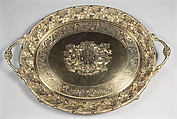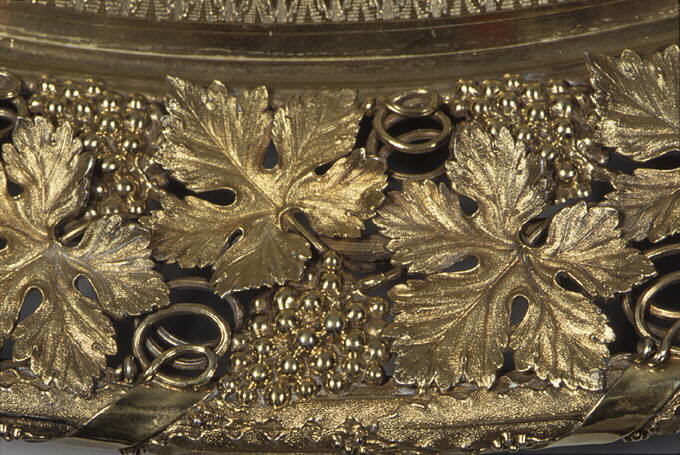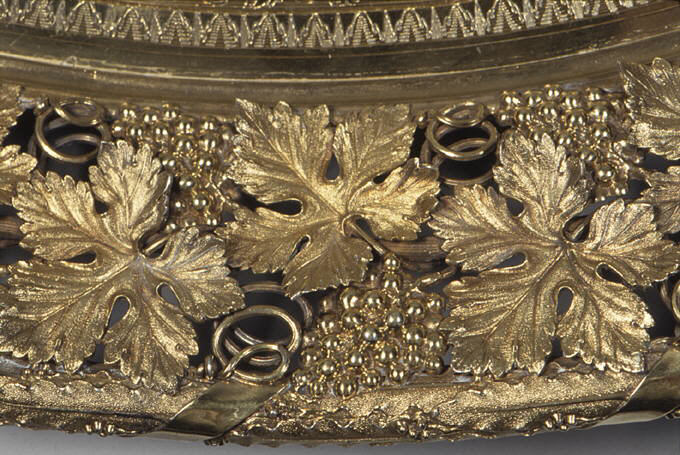Tray with arms of William Burrell (1791–1847)
Digby Scott
Benjamin Smith, II British
Not on view
This great oval tray is an example of the work done by the partnership of Digby Scott and Benjamin Smith working in Greenwich, on the Thames downriver from London, for the firm Rundell & Bridge. At the time London's most prestigious firm, since 1797 Rundell & Bridge had been personal goldsmith to King George III and also the official ""Jeweller, Gold and Silversmiths to the Crown,"" supplying the official plate ordered by the Lord Chamberlain's office. During their partnership from 1802 to 1807, Scott and Smith worked almost exclusively for Rundell & Bridge and their work demonstrates the highest level of design and craftsmanship required by the firm's numerous, wealthy clientele. The tray, with its robust handles and broad rim of vine leaves and grapes naturalistically represented was part of a dessert service. Baskets and coasters in the same design are known. The fauns who crouch to make the four bracket feet evoke the Greek god of wine, Dionysius, whose followers included the fauns, nature-beings often depicted, as here, as half goat, half-man. The large, boldly engraved coat of arms for a member of the Borrel family and the deeply cut engraved inner border of flowering acanthus scrolls reflect the technique of Walter Jackson (active 1801–34), an independent engraver who worked for Rundell & Bridge from about 1803.
Due to rights restrictions, this image cannot be enlarged, viewed at full screen, or downloaded.
This artwork is meant to be viewed from right to left. Scroll left to view more.






